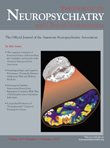Familial Turner Mosaicism 46XX/45XO With Brain Calcification
SIR: A 72-year-old woman presented with mild diabetes mellitus, brain calcification with no obvious neurological deficit, and mosaic 45XO/46XX. Her daughter presented with mosaic 45XO/46XX Turner syndrome with deafness, facial involuntary movement, primary amenorrhea, and marked brain calcification with mild hypoparathyroidism. 1
Her mother had experienced normal menarche, menstral cycle, and birth. The mother’s serum calcium, phosphorus, and parathyroid hormone levels were within normal limits. The ratio of 46XX and 45XO was 85%:15% (40 cells examined) in the daughter and 75%:25% (20 cells examined) in the mother. Her symptoms were much milder than the daughter’s, implying that their genetic defect yielded genetic anticipation. There had been some familial cases of brain calcinosis, known as Fahr disease, in which genetic anticipation had been often observed (i.e., descendent generation reveals severer phenotype). Recently, a locus around a tuberin-like protein gene 1 ( TULIP1 ) at 14q.13-q21.1 was proposed as a candidate locus for Fahr disease. 2 Genetic anticipation has been observed in association with nucleotide repeat expansion, 3 and we searched the 14q.13-q21.1 region for nucleotide repeats through the NCBI BLAST Search (i.e., 10 kinds of trinucleotide-repeat, AAC, AAG, AAT, ACC, ACG, ACT, AGG, ATC, CAG, and CCG), and tetra-nucleotide CCTG 4 and penta-nucleotide repeat ATTCT, 5 which have been reported to cause diseases with genetic anticipation when they expand in certain genes. We identified 36 loci, including the nucleotide repeat in 14q.13-q21.1, but failed to detect any significant expansion of the analyzed nucleotide repeats in the patient and the patient’s daughter.
Turner syndrome is characterized by impaired physical growth and hypogonadism. But some rare cases with 45XO or mosaicism of 45XO/46XX were reported to bear children, some of whom revealed chromosomal abnormality including mosaicism, implying that a genetic defect predisposing to chromosomal fragility yielding chromosomal aneuploidy was hereditarily transmitted to the descendents in those familial cases. 6 , 7 A few reported cases of Turner syndrome accompanied by brain calcification. 1 Some chromosomal instability syndromes with impaired DNA repair mechanisms, such as Cochayne syndrome and Fanconi anemia, which often reveal chromosomal aneuploidy, 8 accompany brain calcification. 9 , 10 The combination of chromosomal aneuploidy and brain calcification may be caused by a genetic defect concerning chromosomal instability.
The candidate locus for familial Fahr disease is proposed to locate around TULIP1 at chromosome 14q.13-q21.1, but the TULIP1 gene contains no nucleotide repeat. Impaired TULIP1 function may be associated with structural alteration of unknown genes containing nucleotide repeats, or cause the genetic anticipation by an unknown mechanism. The genetic anticipation with Fahr disease may be yielded by an unknown mechanism other than nucleotide repeat expansion, or by nucleotide-repeat expansion coming out of 14q.13-q21.1, or by expansion of unknown nucleotide repeat other than analyzed here (i.e., dinucleotide or hexanucleotide repeat).
1 . Suzuki Y, Watanabe H, Haeno S, et al: Primary hypoparathyroidism in Turner’s syndrome. Intern Med 1995; 34:1071–1073Google Scholar
2 . Schwarzbraun T, Vincent JB, Schumacher A, et al: Cloning, genomic structure, and expression profiles of tulip1 (GARNL1), a brain-expressed candidate gene for 14q13-linked neurological phenotypes, and its murine homologue. Genomics 2004; 84:577–586Google Scholar
3 . Lindblad K, Schalling M: Expanded repeat sequences and disease. Seminars in Neurol 1999; 19:289–299Google Scholar
4 . Matsuura T, Yamagata T, Burgess DL, et al: Large expansion of the attct pentanucleotide repeat in spinocerebellar ataxia type 10. Nat Genet 2000; 26:191–194Google Scholar
5 . Liquori CL, Ricker K, Moseley ML, et al: Myotonic dystrophy type 2 caused by a cctg expansion in intron 1 of ZNF9. Science 2001; 293:864–867Google Scholar
6 . Ayuso MC, Bello MJ, Benitez J, et al: Two fertile turner women in a family. Clin Genet 1984; 26:591–596Google Scholar
7 . Birkebaek NH, Cruger D, Hansen J, et al: Fertility and pregnancy outcome in danish women with turner syndrome. Clin Genet 2002; 61:35–39Google Scholar
8 . Callen E, Ramirez MJ, Creus A, et al: Relationship between chromosome fragility, aneuploidy and severity of the haematological disease in fanconi anaemia. Mut Res 2002; 504:75–83Google Scholar
9 . Gayatri NA, Hughes MI, Lloyd IC, et al: Association of the congenital bone marrow failure syndromes with retinopathy, intracerebral calcification and progressive neurological impairment. Eur J Paediat Neurol 2002; 6:125–128Google Scholar
10 . Demaerel P, Kendall BE, Kingsley D: Cranial CT and MRI in diseases with DNA repair defects. Neuroradiology 1992; 34:117–121Google Scholar



